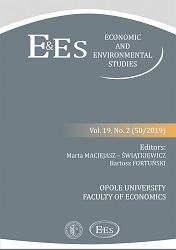Demographic Determinants of the Regional Development in Eastern Poland
Demographic Determinants of the Regional Development in Eastern Poland
Author(s): Łukasz Karol BugowskiSubject(s): National Economy, Demography and human biology, Economic development, Human Resources in Economy, Socio-Economic Research
Published by: Uniwersytet Opolski
Keywords: regional development; demographic process; demographic structure; natural population increase; migrations; Eastern Poland;
Summary/Abstract: Demographic potential is one of the crucial factors creating human capital as the population structure, vital statistics and migration determine the quality and quantity of human resources. Demographic factors create opportunities or limit broadening of knowledge and skills and condition socio-economic activity. In other words, demography can foster or block regional development. In the article, the following hypothesis will be verified: Demographic processes are a barrier to the development of regions in Eastern Poland. The main objective of the article is to analyse the spatial diversity of demographic phenomena in Eastern Poland, along with identifying areas with unfavourable demographic conditions of development. The latter objective will be implemented by carrying out the analysis at the level of subregions, not regions, which will enable a more precise analysis of negative demographic phenomena. The article uses the method of linear ordering of objects in compliance with Z. Hellwig’s taxonomic measure of development. In addition, a comparative analysis of the main demographic processes in 2010, 2013 and 2016 in Eastern Poland was carried out. The main source of the data used in the article was Statistics Poland (Local Data Bank). The analysis makes it possible to conclude that in the years between 2010 and 2016 an increase in the demographic burden resulting from the aging population was observed in Eastern Poland. In addition, the ratio of net migration is negative and sub-replacement fertility rate is common in the majority of subregions. However, the study at the level of subregions allows concluding that Eastern Poland is diverse in terms of the intensity of demographic processes related to depopulation and ageing of the population.
Journal: Economic and Environmental Studies
- Issue Year: 19/2019
- Issue No: 2 (50)
- Page Range: 163-183
- Page Count: 21
- Language: English

